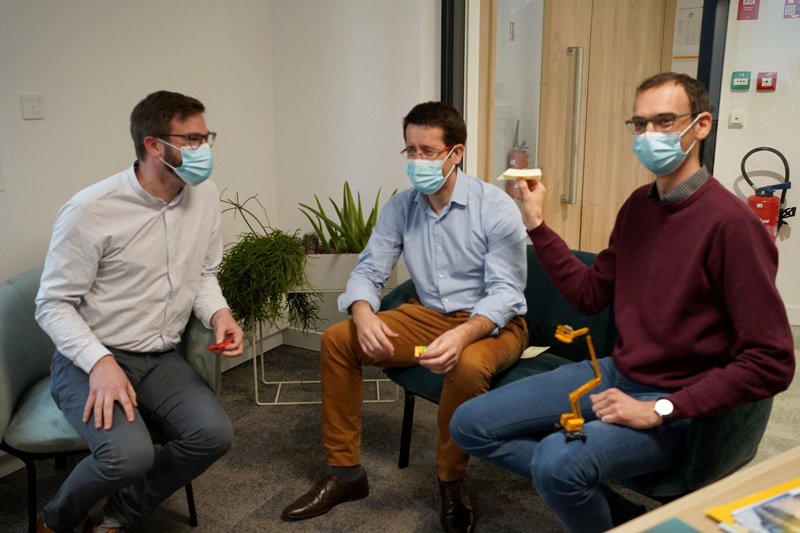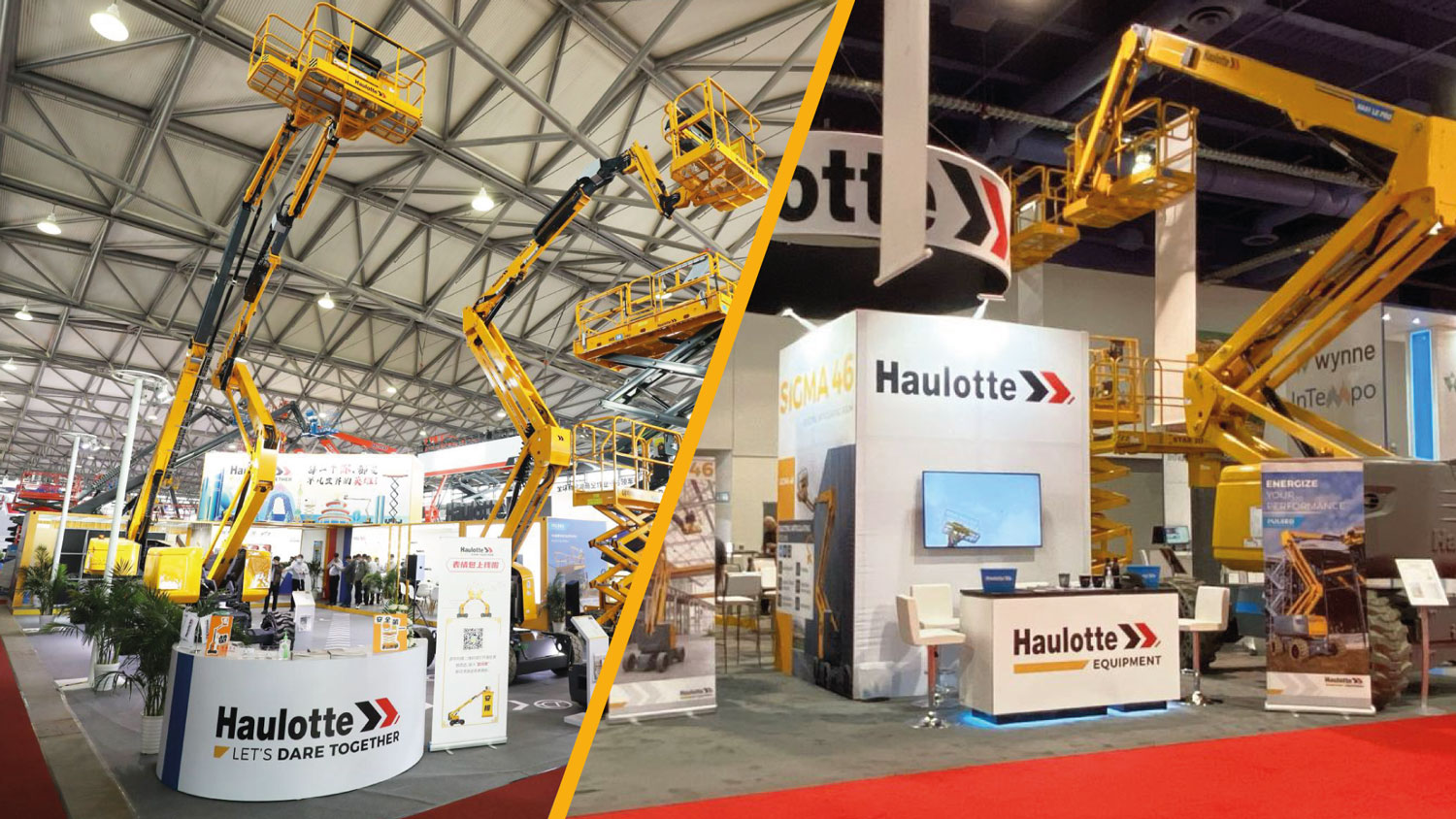Green Packaging
Getting to grips with and solving environmental challenges relating to supply chains is no small task. While the carbon footprint of a spare part is not restricted to its storage and transport, these two aspects can be improved on to reduce the environmental impact of a part before it is delivered to a customer.
With this in mind, the Supply Chain department for Haulotte spare parts has worked on numerous improvements to its processes. The goal? Reduce as much as possible what causes pollution both upstream and downstream without affecting shipment efficiency and packaging performance.
The global manager for parts distribution, Guillaume Mercier, and his 70-strong team have implemented many actions:

Recycled packaging – recyclable and reusable
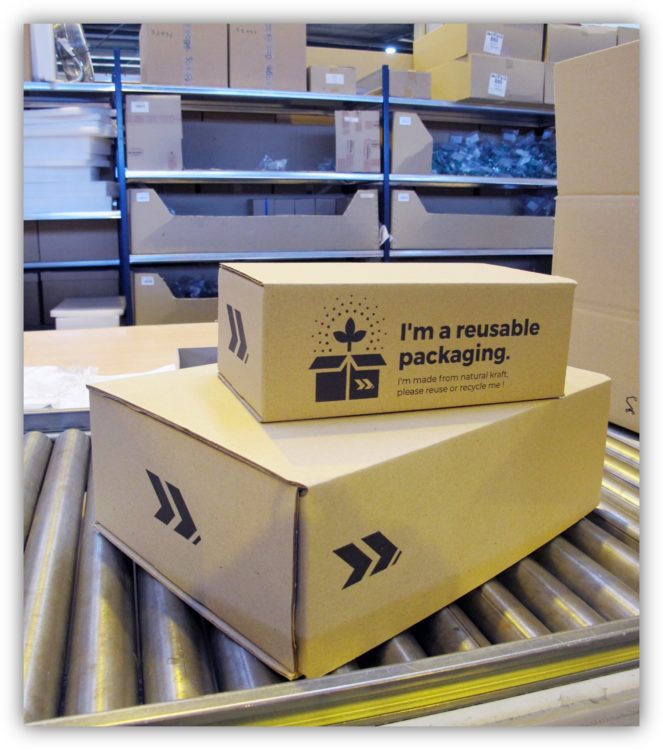
All shipments under 30 kg from Europe will have new packaging. The packaging is made from kraft cardboard in different shapes and sizes, produced using paper from FSC certified forests.
The new packaging has very few markings or printings, except encouragements to reuse it for another shipment or any other way to give the box a second life.
What little printing is found on the box uses water-based ink. The security strips on the boxes are also made from paper so the entire packaging can be recycled.
Reusing received packages
All of Haulotte’s logistics platforms almost systematically reuse all packaging materials (cardboard, dunnage) in which they receive spare parts. The cardboard is reused for delivering to end customers after making sure it is appropriate for the delivery in question.
Adapted and improved protection
Whenever possible, the materials for dunnage, strapping and protection, which are usually plastic, are being replaced with paper and cardboard that are 100% recyclable.
It is sometimes difficult to find paper and cardboard packaging that will properly protect more fragile parts. In such cases, packaging from bio-based plastics are preferred. Supply Chain staff work to improve all materials used for dunnage and packing so that, ultimately, the package and all protective materials are completely recyclable.
One other noteworthy improvement has been to adapt the size of the boxes to the shape of the spare part.
For example, for the shipment of guardrails, the size of the item required a very large cardboard box and the use of a full pallet, which meant high shipment costs.
The Supply Chain team worked on creating a box specific to the exact dimensions of the guardrails and this reduced the box’s volume and removed the need of a pallet.
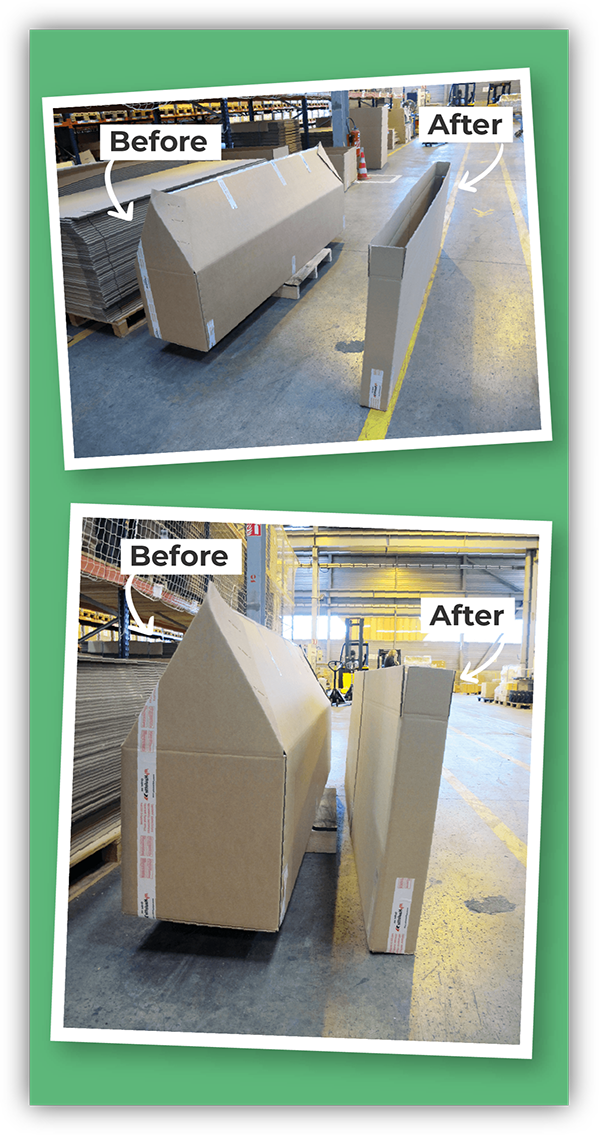
This change had a cascading effect:
lower volume = less need of a pallet = lower land or air transport weight = reduced carbon footprint.
Changing how parts are shipped
For all bulky, heavy parts, the shipment methods have been adapted to reduce the environmental impact of deliveries. Before, the majority of large parts were sent by plane and in small quantities.
Now, the Supply Chain team delivers by sea and in large quantities. This had an impact on the stock levels of parts across all Haulotte logistics hubs, which then required anticipatory stock management. But these changes have meant a far lower carbon footprint on such deliveries.
Working for the environment
In the coming months, the Supply Chain teams from the eight Haulotte logistics hubs will continue their efforts in making improvements to the stocking and logistics of spare parts. Some of those efforts are:
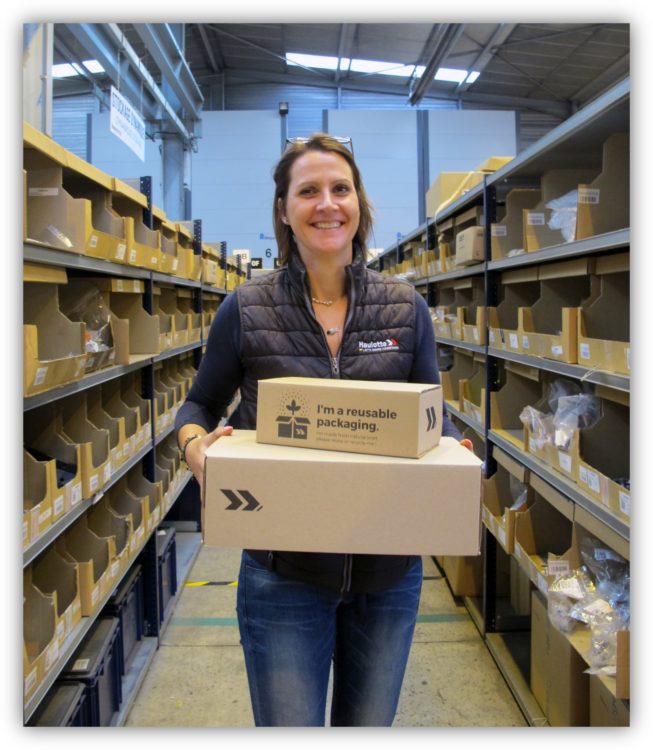
- Remove as much plastic strappings as possible. The July 2023 goal is to have 100% recyclable packaging and protection for all small packages dispatched in Europe;
- Continue optimizing dispatched volume sizes by improving packaging solutions, choosing the best shipment method and working on anticipating shipments and demand better;
- Work early on with part manufacturers to improve how parts are packaged, dispatched and received to avoid repacking as much as possible. The goal here is to reduce waste and the carbon footprint prior to any deliveries made by Haulotte.
All these actions demonstrate Haulotte’s commitment to a CSR approach that meets current and future social and environmental issues.
It is up to everyone to contribute to our CSR through actions and ideas that can help build the future we want!
Further reading
e-Lab: collective intelligence working for digital innovation
In February, Haulotte launched its e-Lab, a digital incubator located at H3 where everyone can go and share their good...
HEART pumping in Australia
Despite lockdowns and significant restrictions throughout Australia, the local team has kick started a great initiative to band together. Called...
Haulotte back at trade fairs
ARA Show – Las Vegas, APEX Asia - Shanghai: A huge success for the teams!

